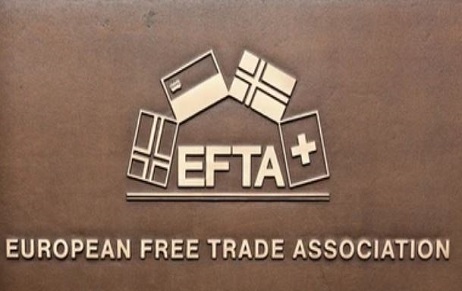This article delves into the ongoing debate around the issue of right of ownership of…
Protecting Fashion or Stifling Innovation
Introduction
The Indian fashion market is pegged at an impressive value of $50 billion, out of which 10% consists of international luxury brands.[1] The fashion industry in India is extremely diverse in the type of fabric, labour, design, way of draping, and handwork that is used. This is evidenced by the numerous Geographical Indication tags endowed on various textiles and hand-looms throughout the country by the government.[2] This produces a higher opportunity for producing counterfeit goods. These include duplicate apparel from Indian and Western fashion houses. It is recorded that 31% of the total counterfeit goods in India are apparel.[3] The blog deals with the role of IPR in fashion and the struggle between innovation and imitation. Fashion takes inspiration from culture, surroundings, nature and fashion itself. This raises the question of IPR when the subject matter is a customary, conventional fashion piece. An example of the same is the red colour used for bridal lehengas and the classic butta or keri. Wouldn’t registering an IPR for such items stifle innovation?
Protection of Fashion: IPR
Indian fashion houses have begun to toe the line of Western fashion houses by registering their designs and fashion works as IPR.[4] However, this has not stopped the production of counterfeit goods. There exist four primary legislations which serve to protect IPRs in India. These are the Copyright Act, 1957; Designs Act, 2000; The Geographical Indication Act of Goods Act, 1999; and the Trademark Act, 1999. At the outset is it important to note that interpreting these legislations gives rise to uncertainty, one which forms the topic of discussion in the next section.

IPRs become important to grant longevity to the profit-making staples of Fashion Houses which take the form of their signature styles or products which would be sold in a longer time. The red soles of Christian Louboutin or the ‘Damier’ (brown and dark brown checker board pattern) of Louis Vuitton are examples of signature styling which have now become status symbols, detecting a specific set of customers. The fashion houses would want to monopolise their signature styles to be the sole recipient of their revenues by eliminating a third party from creating products in line with their signature styles. It is here that the distinction between ‘design’ in the Designs Act and ‘artistic work’ in the Copyright Act becomes relevant.
The purpose of differentiating between an artistic work and a design is to afford greater protection to purely original artistic works like paintings and sculptures while providing a shorter duration of protection for commercially oriented design activities. This is evidenced as an artistic work enjoys protection throughout the life of the author plus sixty years; whereas a design only enjoys protection for 10 years from registration.
Infringement Of IPR – Design or Artistic Work?
One of the landmark cases in this regard is Rajesh Masrani v. Tahiliani Design Pvt. Ltd.,[5] wherein the plaintiff-respondent had accused the defendant of infringing the copyright by creating a reproducing the plaintiff’s fabric prints and rudimentary sketches. The issue boiled down to whether the patterns, fabric prints and sketches were artistic works under the Copyright Act or designs under the Designs Act, which forms the centrepiece in this section of the blog. This distinction becomes important as registration of an ‘artistic work’ is not required under the Copyrights Act as it exists inherently yet a ‘design’ registration is required under the Designs Act for it to enjoy protection.[6] The subject matter here were swatches from different collections of the plaintiff which were poorly reproduced by the defendant in varying sizes but lacking originality. Artistic work is defined in §2(c) of the Copyright Act to include a drawing, architecture or any other work of artistic craftsmanship. Design is defined in §2(d) of the Designs Act to mean “only the features of shape, configuration, pattern… applied to any article… by any industrial process…”. In this case, the swatches were considered to be ‘artistic work’ and the infringement of copyright was claimed by the plaintiffs under §14 of the Copyright Act even without registration. The rights of the author under §14 include the right to reproduce, communicate to the public, adapt etc the subject matter of artistic work. Upon reading §15(2) of the Copyright Act, it is understood that designs under the Copyright Act may or may not be capable of being registered under the Designs Act. This shows that designs form a subset under the Copyright Act.
The case of Micro Fibre Inc. v. Girdhar & Co.[7] declared that the object of exclusion of ‘artistic work’ from the Design Act is to exclude the original works of art like paintings or sculptures or other works of art. It also laid down the criteria to designate a work as an ‘artistic work’. It emphasises on the industrial character of the subject matter which makes it a design rather than an artistic work. A design has an ‘independent existence’ in itself. As a result, the necessary examination involved assessing the design to determine if it is currently being used or intended for use as a template for patterns to be replicated through an industrial process.[8] A design may be eligible for protection under the Copyright Act under §15(2). However, this is limited. Exceeding the designated threshold, the copyright protection for a design derived from an original artistic work comes to an end when the design is utilized more than 50 times through an industrial process on a product unless it has been formally registered under the Designs Act.
To give an example in the context of apparel, a sketch of a red Anarkali with fine printed motifs and a thick bold green coloured border will be considered an original artistic work owing to the broad definition under §2(c) of the Copyright Act. It may be converted into reality by using the required fabrics. This may be done by employing an industrial process or manually or by some other methodology. If an original artistic work is replicated using an industrial process on an object, and the resulting object is visually appealing solely based on its appearance, then the aspects of shape, configuration, pattern, ornament, or the composition of lines or colours applied to the object through the industrial process qualify as a ‘design’ as defined in the Designs Act. As one can see the commerciality of the article plays a role in designating an article as a design. This is also a reason why design copyrights form the majority of protection in fashion.
The example illustrates the subjectivity of differentiating artistic work from design. What forms the threshold of ‘commerciality’ or ‘independent existence’? Since design and artistic work are both ‘original’ works as per the Designs Act and Copyright Act but the period of protection available to them differs. This also raises a fundamental question of whether putting barriers on the use of art through IPR hinders the development of fashion. The same is addressed in the next section by looking at means of protection offered by different jurisdictions.
Protection versus Frustration of Fashion
It is widely known that permutation and combination of a limited number of motifs or patterns result in the creation of apparel in the fashion world. The illustration of butta or keri handwork in the collection of almost every Indian traditional fashion house given in the introduction is a case in point. If one were to copyright these handworks, then creativity and innovation within fashion would be stifled. However, if copyrights were not allowed on premium objects like the style of necklaces or particular assemblages of stones in a watch, an inequitable and unfair system of counterfeit production would emerge. Hence, it becomes important to find a line between protecting and stifling fashion.
The USA aims to do this by employing the principle of separability. In the recent case of Star Athletica, LLC v. Varsity Brands, Inc., the USA Supreme Court held that only certain design features which can be separated from the product as a whole can be granted copyright to prevent monopolization of garments. This has not found favour with the US fashion industry due to obvious reasons. In contrast to this, the European Council Regulation on Community Design 2003 protects the design of ‘the appearance of the whole or a part of a product’.[9] This gives greater protection to fashion houses.
In India, however, the author argues that the prevalence of counterfeits of premium products poses no harm to high fashion producers but such imitation only fosters innovation. This is due to the huge gap between the rich and poor in India. The customers who buy counterfeit products could have never formed a part of the clientele of luxury fashion. Counterfeit goods in this case might propel fashion by adding a layer of novelty to high-end products. As mentioned before, Indian legislation does not provide copyright in respect of the whole product like the European Union. This has led to fashion houses using trademarks under the Trade Marks Act 1999, to protect their ingenuity like the Sabyasachi Calcutta Tiger for the fashion house Sabyasachi.
The actual hub of innovation in fashion in India is the boutiques and next-door handloom houses that are not limited in their designs to prescribe the norms such that they are presented at Fashion Weeks. The costs involved in registering design copyrights make it unattainable for boutique fashion houses to protect their creative individualism. Moreover, due to their limited popularity and brand appeal, their unique designs have a selling price which is within the reach of a larger middle-class clientele. Therefore, counterfeits of unique boutique apparel harm these small businesses more than compared to counterfeits of well-known fashion houses. Hence it becomes more important, in the opinion of the author to protect the unique fashion designs of boutiques.
Conclusion
The Indian legal landscape regarding fashion is still in its nascent stage. The IPR legislations as they exist currently are not tailored to meet the needs of every section of the Indian Fashion Industry. As explained in the blog, it makes a world of difference whether the article is recognized as an ‘artistic work’ or ‘design’ due to the different levels of protection given. However, the line distinguishing them tends to get blurry. To remedy these problems, a call for specific legislation on fashion in the long term and cohesive interpretation of existing statutes which remove uncertainty in the short term is required to generate confidence in the Indian fashion landscape and expand its global market share and value.
Author :Aashkaa Jain, in case of any queries please contact/write back to us via email to [email protected] or at IIPRD.
References
- Live mint, ‘India’s fashion market is worth $50 bn’, April 5, 2023, available at https://www.livemint.com/companies/start-ups/indias-booming-wedding-market-driving-fashion-and-luxury-goods-business-says-the-business-of-fashion-ceo-imran-amed-11680633239984.html (Last accessed on December 30, 2023)
- Press Information Bureau Government of India Ministry of Textiles, G.I. Tagged Products, available at https://pib.gov.in/Pressreleaseshare.aspx?PRID=1594198 (Last accessed on December 30, 2023)
- Live mint, ‘Almost 25-30% products sold in India spurious with counterfeiting: Report’, January 25, 2023, available at https://www.livemint.com/industry/retail/almost-25-30-products-sold-in-india-spurious-with-counterfeiting-report-11674655725574.html (Last accessed on December 30, 2023)
- The Economic Times, Indian fashion designers should audit their intellectual property: Safir Anand, Anand and Anand, October 18, 2012, available at https://economictimes.indiatimes.com/opinion/interviews/indian-fashion-designers-should-audit-their-intellectual-property-safir-anand-anand-and-anand/articleshow/16864097.cms (Last accessed on December 30, 2023)
- Rajesh Masrani v. Tahiliani Design (P) Ltd., 2008 SCC OnLine Del 1283
- Burroughs Wellcome (India) Ltd. Vs. Uni-sole Pvt. Ltd. and Another 1999 PTC (19) 188
- Microfibres Inc. v. Girdhar & Co., 2009 SCC OnLine Del 1647
- Copinger, W. A., & Easton, J. M. (1915). The law of copyright, in works of literature, art, architecture, photography, music and the drama: Including chapters on mechanical contrivances and cinematographs : together with international and foreign copyright, with the statutes relating thereto (Fifth edition.).
- European Union, COUNCIL REGULATION (EC) No 6/2002 of 12 December 2001 on Community designs (OJ EC No L 3 of 5.1.2002, p. 1), available at https://euipo.europa.eu/tunnel-web/secure/webdav/guest/document_library/contentPdfs/law_and_practice/cdr_legal_basis/62002_cv_en.pdf (Last accessed on December 30, 2023)
[1] Live mint, ‘India’s fashion market is worth $50 bn’, April 5, 2023, available at https://www.livemint.com/companies/start-ups/indias-booming-wedding-market-driving-fashion-and-luxury-goods-business-says-the-business-of-fashion-ceo-imran-amed-11680633239984.html (Last accessed on December 30, 2023)
[2] Press Information Bureau Government of India Ministry of Textiles, G.I. Tagged Products, available at https://pib.gov.in/Pressreleaseshare.aspx?PRID=1594198 (Last accessed on December 30, 2023)
[3] Live mint, ‘Almost 25-30% products sold in India spurious with counterfeiting: Report’, January 25, 2023, available at https://www.livemint.com/industry/retail/almost-25-30-products-sold-in-india-spurious-with-counterfeiting-report-11674655725574.html (Last accessed on December 30, 2023)
[4] The Economic Times, Indian fashion designers should audit their intellectual property: Safir Anand, Anand and Anand, October 18, 2012, available at https://economictimes.indiatimes.com/opinion/interviews/indian-fashion-designers-should-audit-their-intellectual-property-safir-anand-anand-and-anand/articleshow/16864097.cms (Last accessed on December 30, 2023)
[5] Rajesh Masrani v. Tahiliani Design (P) Ltd., 2008 SCC OnLine Del 1283
[6] Burroughs Wellcome (India) Ltd. Vs. Uni-sole Pvt. Ltd. and Another 1999 PTC (19) 188
[7] Microfibres Inc. v. Girdhar & Co., 2009 SCC OnLine Del 1647
[8] Copinger, W. A., & Easton, J. M. (1915). The law of copyright, in works of literature, art, architecture, photography, music and the drama: Including chapters on mechanical contrivances and cinematographs : together with international and foreign copyright, with the statutes relating thereto (Fifth edition.).
[9] European Union, COUNCIL REGULATION (EC) No 6/2002 of 12 December 2001 on Community designs (OJ EC No L 3 of 5.1.2002, p. 1), available at https://euipo.europa.eu/tunnel-web/secure/webdav/guest/document_library/contentPdfs/law_and_practice/cdr_legal_basis/62002_cv_en.pdf (Last accessed on December 30, 2023)



